Report by Jeff Halper (May 2023)
A few months ago, ICAHD was approached by a farmer/activist in the Palestinian town of Beit Ummar in Area C of the southern West Bank to support his efforts, and those of other local farmers, to defend their lands by allowing them to increase their presence through cultivation and infrastructure development. We took up his request and have begun construction of agricultural structures that will strengthen the farmers ability to prevent further loss of their land to settlers and the Israeli authorities.
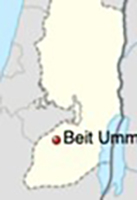
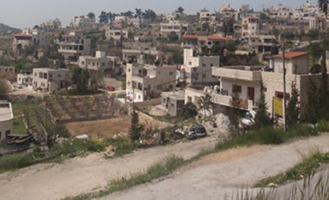

The Town of Beit Ummar
Beit Ummar is an ancient Palestinian town located eleven kilometers northwest of Hebron. It’s history goes back to the Canaanite town of Maera (Maareth in the Bible), on whose ruins it is built. The Crusaders named it “Beth Amen”, and it acquired its current Arabic name from Ibrahim Pasha, the Egyptian rule who conquered Palestine in 1831 and settled there. Beit Ummar boasts numerous historical and archeological sites in the town, including a 5th Century church, a 13th Century mosque and a mosque which is said to be the burial site of prophet Matta (Mathew), the father of biblical prophet Jonah. Before 1948 the town also contained a small Jewish population.
Extending over 40,000 dunams (7,500 acres), Beit Ummar was once renowned for its grape vines and cherry, plum, apple and olive orchards. Today the most common crops grown are tomatoes and squash, grapes, olives and other “stone fruits” (peaches, plums, apricots, dates and mangoes), as well as corn, barley and lentils. Local farmers also raise cows, sheep, goats and chickens, and cultivate more than 200 beehives.
Although half of Bet Ummar’s land is considered arable, though only half of that is cultivated, largely because of Israeli-imposed limitations on water and irrigation, Israeli restrictions on farming or the need for additional infrastructure to allow the access of tractors. Since the Israeli occupation began in 1967, Beit Ummar has lost much of its land and crops. Four thousand dunums of land (1000 acres) have been confiscated for the construction of the surrounding settlements – Karmei Tzur, Migdal Oz, Bat Ayin, Kfar Etzion and Efrat – another 1,000 dunums of land confiscated by the Israeli army and closed to Palestinian farmers, yet another 1,150 dunums have been bulldozed for “security reasons” or because Israel claims them as “State Land. More than 5,000 grape vines, 1,500 fruit trees and 350 forest trees have been uprooted, and dozens of homes demolished. A third of its 20,000 inhabitants are under the age of 18; unemployment stands at almost 80%.
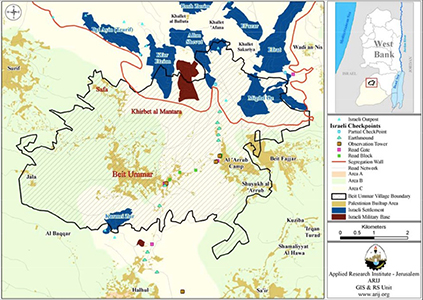

An IDF watchtower looms menacingly over the town’s entrance, which has been designated a “military zone” and severely restricts movement in the area, including the ability to move crops for sale.
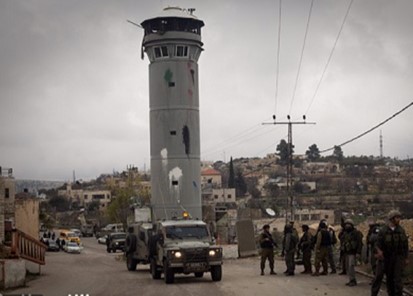
The Project
Approximately 60% of Beit Ummar’s residents rely on agriculture for their living, but they face two main threats to their livelihood: encroachment by Israeli settlers and the army on their lands, and a chronic need to improve the agricultural infrastructure, thus allowing farmers to cultivate more land. ICAHD was approached by a Palestinian farmer, a leading member of the local Tanweer land defense organization – we will call him Naji to protect him against Israeli reprisals – to assist him in constructing an agricultural outbuilding that will address both those threats: it will allow him to strengthen his presence on the land and to increase his cultivation, and it will encourage other farmers to do the same.
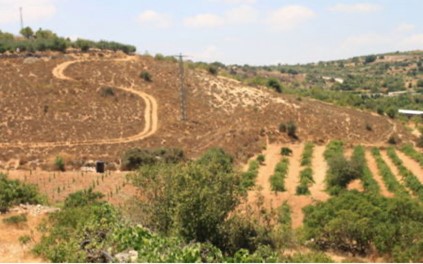
Here is a statement to ICAHD from Naji:
My name is [Naji] and I am a resident of Beit Ummar. I am 53 years old and have 5 children.
I have three dunums of land which is next to the Karmi Tzour settlement. It is filled with fruit trees that I planted. The settlers, under the protection of the IOF, confiscated this land 17 years ago and I am forbidden from entering my land to rehabilitate it. I do not know how to file a lawsuit against the occupation for the loss of my land.
I also own about 6 dunums of land in Area C, which borders the Gush Etzion settlement. Due to the high cost of developing the entire area, I decided to develop one dunam of my land and build an agricultural house on it. The house will incentivize me to maintain an ongoing presence on my land and rehabilitate it.
The construction of the agricultural house, which will be 7 x 4 meters, will enable the municipality of Beit Ummar to provide electricity and water to the area. I have already completed the foundation of the house at a cost of 7000 thousand shekels (£1700).
The total cost of completing the agricultural house is 20,000 shekels (£4,800), which includes the cost of doors, windows, water tanks, the price of tiles, electricity and the construction of four walls and a bathroom. This is a project consistent with Beit Ummar’s long history of popular resistance to losing it lands.
This project will inspire other farmers from Beit Ummar to rehabilitate their lands and establish agricultural outbuildings of their own. Our presence on the land will deter further land theft by the settlers under the protection of the IOF. This will also increase the possibility of implementing new agricultural projects, for example, water wells and the rehabilitation of our farmland.
I look forward to your assistance in strengthening the steadfastness of the farmers by supporting our resistance to the settlement industry and protecting what is left of my land.
The project differs from usual ICAHD building projects in several ways: it is not a demolished home we are rebuilding but an agricultural outbuilding; the project cannot be done in public as an outward expression of resistance to the Occupation, as ICAHD rebuilding projects have always have been, because we need to protect both the owner and the building, which he fears will be targeted if attention is called to it; and ICAHD volunteers will not participate in the construction since, again, that would call attention to the site.
Nonetheless, this is a political project that impacts tangibly on the ability of Palestinian farmers to remain on their land, a purpose consistent with ICAHD’s goals. We will publicize the project in a way that does not endanger Naji or his land (e.g., using generic pictures of Beit Ummar and the land instead of photographs from the site itself) but which, nevertheless, does contribute to with our political need to highlight Palestinian resistance and ICAHD’s commitment to supporting it. Atta Jabar, a Palestinian farmer who lives down the road from Beit Ummar, who has worked with ICAHD for many years (we built two of his demolished homes) and who knows Naji well, will oversee the project on the ground.
Stage 1: Initial Construction (March-April, 2023)
Upon receiving the first payment of $5,500 (20,000 shekels), Naji began construction on the agricultural outbuilding on his own farmland), illustrated in the following pictures:
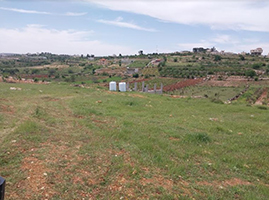
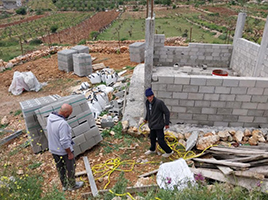
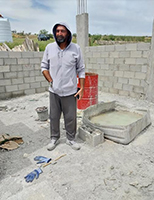
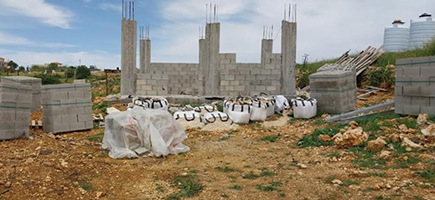
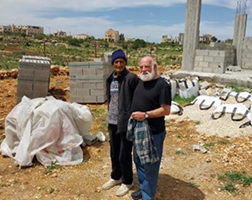
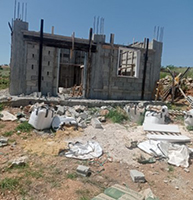
Stage Two: Finalizing the Construction (May-June, 2023)
Naji is now ready to complete the construction: installing electricity and water, finishing the interior of the building and constructing a protective fence, for which ICAHD supplied an additional $1,500.

The goal of the project is to arrive at a type of structure that enables farmers and their families to store equipment and sleep in the fields during planting and harvesting so as to better utilize the land that is today difficult to access and is under-cultivated, yet one that is affordable so that we may construct as many as needed by the farmers, in cooperation with Tanweer and other local associations. The model is the traditional Palestinian sireh, though adapted to modern agricultural.
At a time when the Civil Administration, Israel’s military government over the West Bank now headed by Bezalel Smotrich, a violent settler who is both the Minister of Finance in the Netanyahu government and a minister in the Ministry of Defense, has declared it intends to increase the settler population of the West Bank from its current 400,000 to a million as settlements expand onto Palestinian land, driving its residents into the Bantustans of Areas A and B, this project has acquired great urgency.
